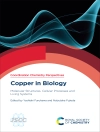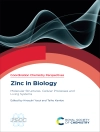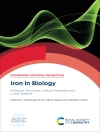This book provides an overview of bioinspired metal-sulfur catalysis by covering structures, activities and model complexes of enzymes exhibiting metal sulphur moieties in their active center.
Spis treści
PART I: PRIMORDIAL METAL-SULFUR MEDIATED REACTIONS
From Chemical Invariance to Genetic Variability
Fe-S Clusters: Biogenesis and Redox, Catalytic and Regulatory Properties
PART II: MODEL COMPLEXES OF THE ACTIVE SITE OF HYDROGENASES – PROTON AND DIHYDROGEN ACTIVATION
[Ni Fe] Hydrogenases
[Fe-Fe]Hydrogenases Models: An Overview
The Third Hydrogenase
DFT Investigation of Models Related to the Active Site of Hydrogenases
Mechanistic Aspects of Biological Hydrogen Evolution and Uptake
PART III: NITROGEN FIXATION
Structures and Functions of the Active Site of Nitrogenases
Model Complexes of the Active Site of Nitrogenases: Recent Advances
A Unified Chemical Mechanism for Hydrogenation Reactions Catalysed by Nitrogenase
Binding Substrates to Synthetic Fe-S-Based Clusters and the Possible Relevance to Nitrogenases
PART IV: MISCELLANEOUS: RCN ACTIVATION, DMSO REDUCTION
Sulfur-Oxygenation and Functional Models of Nitrile Hydratase
Molybdenum and Tungsten Oxidoreductase Models
PART V: APPLICATIVE PERSPECITVES
Electrode Materials and Artificial Photosynthetic Systems
O autorze
Wolfgang Weigand received his Ph D degree from the Ludwig-Maximilian-University of Munich under the supervision of Professor W. Beck in 1986. After a postdoctoral stay with Professor D. Seebach at ETH Zurich, he finished his habilitation at Ludwig-Maximilian-University in 1994. Since 1997 he is Professor of Inorganic Chemistry at the Friedrich-Schiller-University Jena. He has received the 'Forschungspreis der Thüringer Ministerin für Wissenschaft, Forschung und Kunst’ and he is also 'Ordentliches Mitglied der Akademie gemeinnütziger Wissenschaften zu Erfurt’.
Philippe Schollhammer, Professor of Chemistry, obtained his Ph D in 1994 at UBO (Université de Bretagne Occidentale, Brest-France) under the supervision of Professor F.Y. Pétillon. In 2001, he joined during a sabbatical leave the group of Professor R.H. Henderson at the University of Newcastle upon Tyne, UK. His current research interests include activation of small molecules by organometallic dinuclear complexes.












